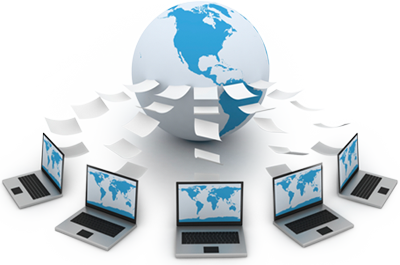Is our iPhone or iPad fast
filled with photos, videos and documents? Let's find out how to increase the
internal memory of an Apple portable device
One of the main flaws of the
iPhone or iPad is not having the expandable internal memory
.
The iPhone has various cuts
for its devices and in recent years the most popular models are certainly those
with less than 64 GB of internal memory, easily filled by taking many photos,
making many videos and downloading documents to read them on the screen.
With the iPad the memory
cuts are higher, but even on the Apple tablet space can end soon without
realizing it.
As the iPhone applications
are getting bigger, including graphically curated games and increasingly
powerful apps, it becomes difficult to manage the internal space especially if
we start to upload music, documents, videos, podcasts and high-resolution
photos.
Unfortunately, we can not
expand the memory of the iPhone by adding an additional memory inside by
microSD as you would any other Android smartphone or Nokia, but in this guide
we will show you all the possible methods to increase the memory capacity of
the Apple device in our possession .
How
to increase the internal memory of an iPhone or iPad
Before continuing we can see
how much memory space is left in the iPhone or iPad going in the menu Settings
-> General -> Info to get the detail on the memory used by photos, music,
videos and installed applications.
So we will know well in
advance when we will have to intervene to save some of the data stored on the
device before the space ends.
Since all owners of an
iPhone certainly have a subscription plan to surf the Internet and since you
should find more often free WiFi around, is to use the services and cloud apps.
Below we have collected some
of the free online apps for use with an iOS device (iPhone and iPad) to expand
the memory , if one can say so in a broad sense.
First of all we will move
songs, videos, films and photos ; these are definitely the files that take up
most of the space on Apple portable devices.
Unless you travel a lot and
have no trouble getting access to a Wi-Fi or 3G network, you do not need to
upload hundreds of songs or videos to your iPhone.
Dropbox
I imagine all the most
expert computer users know Dropbox, but it often happens to meet iPhone users
who still do not know this online service and the related apps for iPhone, iPad
and iPod Touch.
With a Dropbox account , you
can store files on the internet for up to 2 gigabytes of free space.
On
Dropbox You Can Save Any Type of File, Even Mp3 and Film
Is our iPhone or iPad fast
filled with photos, videos and documents? Let's find out how to increase the
internal memory of an Apple portable device
One of the main flaws of the
iPhone or iPad is not having the expandable internal memory.
The iPhone has various cuts
for its devices and in recent years the most popular models are certainly those
with less than 64 GB of internal memory, easily filled by taking many photos,
making many videos and downloading documents to read them on the screen.
With the iPad the memory
cuts are higher, but even on the Apple tablet space can end soon without
realizing it.
As the iPhone applications
are getting bigger, including graphically curated games and increasingly
powerful apps, it becomes difficult to manage the internal space especially if
we start to upload music, documents, videos, podcasts and high-resolution
photos.
Unfortunately, we can not
expand the memory of the iPhone by adding an additional memory inside by
microSD as you would any other Android smartphone or Nokia, but in this guide
we will show you all the possible methods to increase the memory capacity of
the Apple device in our possession.
How
to increase the internal memory of an iPhone or iPad
Before continuing we can see
how much memory space is left in the iPhone or iPad going in the menu Settings
-> General -> Info to get the detail on the memory used by photos, music,
videos and installed applications.
So we will know well in
advance when we will have to intervene to save some of the data stored on the
device before the space ends.
1)
Move the heaviest files on the cloud
Since all owners of an
iPhone certainly have a subscription plan to surf the Internet and since you
should find more often free WiFi around, is to use the services and cloud apps.
Below we have collected some
of the free online apps for use with an iOS device (iPhone and iPad) to expand
the memory , if one can say so in a broad sense.
First of all we will move
songs, videos, films and photos ; these are definitely the files that take up
most of the space on Apple portable devices.
Unless you travel a lot and
have no trouble getting access to a Wi-Fi or 3G network, you do not need to
upload hundreds of songs or videos to your iPhone.
Dropbox
I imagine all the most
expert computer users know Dropbox, but it often happens to meet iPhone users
who still do not know this online service and the related apps for iPhone, iPad
and iPod Touch.
With a Dropbox account , you
can store files on the internet for up to 2 gigabytes of free space.
On Dropbox you can save any
type of file, even mp3 and film
We connect to his site and
sign up to get immediately 2 GB of additional space for our iPhone and iPad (we
can increase the space by paying a monthly fee).
The
Dropbox site can be reached here -> Dropbox.
As written in another
article with Dropbox you have a virtual hard disk on the Internet, whose
content is synchronized between all the devices on which Dropbox is installed
and the files can also be used by Android smartphones.
All you need to do is sign
up for Dropbox and download the app to your Apple device; the app is available
here -> Dropbox App (iPhone and iPad).
Automatically we can
configure the Dropbox app to immediately save the videos and photos taken with
the camera, so you can copy them without having to manually proceed (basic only
on WiFi, but otherwise we have data problems we can upload photos and videos
also through LTE and 3G).
Obviously we can also
manually move the files we want to save so as to delete them on the mobile
device and recover space.
With the latest version of
Dropbox you can also access selected files, offline, without an Internet
connection.
In addition, Dropbox allows
you to export a PDF or Word file to another application that supports reading
documents.
To have more space on the
iPhone for photos and documents as well as all types of files you can use the
application the Google Drive service on iPhone and iPad.
In order to use it we will
first have to sign up with a Google account to the Drive page.With this app we
can move the app manually to our cloud; to automatically save photos and videos
on Drive we will have to use another app linked to the service called Google
Photos.
Apple
iCloud
Among other cloud options there is also the integrated
service in Apple called iCloudwith 5GB free for backups of music, images and
address book of the iPhone, iPad and iPod touch in a completely automatic.
Using an Apple account we
will already have access to this space in the cloud, we will not have to do is
check the settings in this regard in the path Settings -> Account and
password -> iCloud .
We activate all the items we
want to backup, including photos, contacts and other personal data on the
device.
2) Use external memory
compatible with iPhone and iPad
Although we can not use
microSD, we can always focus on external memories compatible with iPhone and
iPad, thanks to Lightning support.
These devices are very
similar to USB sticks, but a part of the device has a Lightning socket that can
be used to connect it to the iPhone or iPad and just like a normal USB stick we
can move the heaviest files from the internal memory of the device Apple to
external memory, so as to increase the amount of space available on iPhone and
iPad.
The best devices we can buy
are the following:
Flash
Drive iPhone RAVPower USB Flash Drive iPhone (
Sandisk
iXpand USB 3.0
UGREEN
USB Memory for iPhone and iPad
iPhone
RAVPower Flash Drive iPhone 64G
You choose your favorite key
(different cuts and sizes are available) and connect it to the your iPhone or
iPad device from the same outlet where we usually insert the charging cable.
Many of these portable
devices also have apps to automatically back up the gallery and videos, so you
can save heavier content in just a few taps on the screen.



